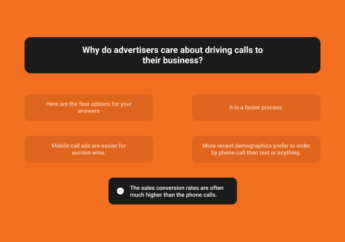How Can You Tell If Your Team Is Diverse Enough?
by Abdul Aziz Mondal Business Published on: 10 June 2023 Last Updated on: 11 November 2024

Creating a diverse team is essential for any organization to achieve success. But how do you know if your team is diverse enough? One way to ensure diversity is by examining the unique qualities that each member brings to the table. Assessing these characteristics can help you identify any gaps within your team and work towards creating a more inclusive environment. Additionally, encouraging open communication and embracing different perspectives can also enhance diversity within your team. Allowing for diversity creates a stronger team, fosters creativity, and ultimately leads to better decision-making.
Business leaders today recognize that diversity in the workplace is essential to drive innovation, better customer service, and increased profits. However, having a diverse team is not just hiring people from different backgrounds. In this article, we’ll dive into how to assess your team’s diversity and the steps you can take to improve it.
Understanding Diversity
Diversity is more than just differences in race, gender, sexuality, and age. It includes every aspect that is likely to distinguish humans from one another, including background, education, nationality, religion, and more.
A true understanding of diversity requires more than just tolerance or superficial acceptance. It requires an active effort to learn about and appreciate the unique qualities and contributions that each individual brings with them. Embracing diversity can lead to more open-mindedness, creativity, and innovation in all aspects of our lives.
Diversity brings values such as different perspectives, ideas, and experiences into the workplace. A diverse team improves problem-solving and decision-making abilities, as individuals bring their unique viewpoints to the team. Inclusion and diversity help a company to remain competitive since they facilitate innovation, an essential aspect of business success. But, while diversity is valuable, it’s only possible to achieve it if we address bias and prejudice in the workplace. Companies need to create a inclusive, equitable, and respectful climate for all employees regardless of their differences.
Why Diversity Matters
A diverse team brings a variety of perspectives that can lead to creative problem-solving and improved decision-making. A study by McKinsey & Company found that companies with a more diverse workforce outperform their less diverse counterparts financially.
Also, with a diverse team, you can better understand your customers and meet their needs. Your employees will also feel valued and included, leading to higher employee engagement, retention rates, and job satisfaction.
Measuring Diversity
Diversity in the workplace is crucial for any organization that wants to achieve success in the global market.
Diversity can be measured in a number of ways, including demographic data such as age, gender, ethnicity, nationality, sexual orientation, and socioeconomic background. However, true diversity goes beyond just these surface-level characteristics and should also include differences in perspectives, experiences, and ways of thinking.
Some of the tools for assessing diversity include employee surveys, diversity, and inclusion audits and metrics, assessments of team composition, and analysis of job postings and interviews.
There are several tools and techniques that can be used to measure diversity within a team. One method is to create a diversity index, which measures the variability of personal characteristics such as age, gender, ethnicity, and educational background of team members. Another approach is to conduct employee surveys that collect data on team members’ demographics, values, and cultural backgrounds.
Additionally, organizations can use social network analysis to analyze the patterns of collaboration among team members to identify any potential gaps in diversity. By using these tools and techniques, organizations can gain a better understanding of the level of diversity within their teams and take steps to ensure inclusivity and equity in their workplace.
How To Do It?
Look At The Demographics Of Your Team
The first step to assessing your team’s diversity is to look at its demographics. Check the age, gender, race, ethnicity, and other characteristics of your team members. If your team consists of people from different backgrounds, you are off to a good start. However, if everyone looks the same, you might want to consider recruiting from a wider pool of candidates to increase diversity.
Examine Your Team’s Skill Sets And Backgrounds
Diversity is not only about demographics but also about the variety of skills, experiences, and backgrounds of the team members. If everyone in your team has a similar education or professional background, you might be missing out on the benefits of diversity. Consider recruiting people with different educational backgrounds or experiences to bring new perspectives to your team.
Assess Your Team’s Communication And Collaboration Styles
Diversity can also manifest in the way people communicate and collaborate. If everyone in your team communicates in the same way or has similar problem-solving approaches, you might be limiting your team’s potential. Consider encouraging diverse communication styles, such as active listening or brainstorming sessions, to foster a more inclusive environment.
Measure Team Engagement And Inclusivity
Finally, it is essential to measure how engaged and included team members feel. Conduct surveys or focus groups to gather feedback on how team members feel about the organization’s culture and inclusivity. If team members from diverse backgrounds do not feel included, you might need to implement diversity and inclusion training or policies to address any gaps.
Strategies For Improving Diversity
Some of the most effective strategies for improving diversity are:
1. Identifying gaps in diversity
2. Building a more inclusive recruitment process
3. Developing a diversity and inclusion plan
4. Empowering individuals to speak up
5. Providing diversity and inclusion training
6. Offering flexible work arrangements
7. Developing inclusive policies and practices
Identifying gaps in diversity is critical to improving diversity. Conducting a workforce analysis can help by showing whether certain demographics are underrepresented in the company. You can then set your diversity goals based on this information.
Building a more inclusive recruitment process can help broaden the candidate pool and attract candidates from diverse backgrounds. This process may include measures such as using different job boards and associations, reaching out to more diverse schools and universities, or looking beyond formal qualifications when recruiting. Additionally, hiring managers should avoid biases when assessing resumes and conducting interviews.
Developing a diversity and inclusion plan is essential. You can consult with employees in creating the plan, which should include goals that align with your organization’s values, mission, or vision. Specific targets might include, for example, increasing gender diversity by 20% within the next two years. Ensure that the plan is actionable and measurable.
Empowering individuals to speak up can create a culture of inclusion and diversity within the organization. Provide a safe space, and training to facilitate dialogue around diversity and inclusion. Also, encourage employees to communicate openly about their experience in the company. Let them identify opportunities for improvement and share ideas that align with the company’s values.
An important first step to creating an inclusive working environment is to provide comprehensive training to employees on diversity and inclusion. This training should cover topics like unconscious bias, cultural competency, and effective communication.
You can offer flexible work arrangements such as telecommuting, job-sharing, and alternative start or end times. This can help attract and retain employees from diverse backgrounds who may have different needs and schedules.
Developing policies and practices that are inclusive and accommodating for all employees regardless of their background, such as flexible leave policy, health benefits, parental leave, etc., can make employees feel more comfortable and invested in the organization.
Overall, working towards creating a diverse, inclusive, and equitable environment will encourage innovation, improve organizational performance and foster a more engaged and motivated workforce.
Common Misconceptions
The idea of reverse discrimination is a common misconception relating to diversity. This concept suggests that creating a diverse workplace is taking away opportunities from individuals who fit traditional demographics. However, diversity is about creating equal opportunities for everyone and removing barriers that hold back underrepresented groups. No one is losing a place at the table. Instead, we’re creating more tables and providing seats for all people, regardless of who they are.
Another common misconception is that diversity and merit are contradictory. Some people believe that hiring for diversity means sacrificing competency for inclusion. However, this idea of having to choose between two options is not entirely true. Hiring for diversity can be a win-win situation where the company adds diverse talents and skills to the workplace while promoting diversity and inclusion. A more diverse range of backgrounds and experiences brings additional perspectives and insights, leading to better teamwork, creativity, and, ultimately, more excellent results. Merit should be the primary criterion for success, but diversity should also be a consideration when selecting candidates for a position.
Assessing and improving diversity in the workplace is an ongoing process. To create a more inclusive and diverse team, it’s essential to understand the value of diversity, measure it meaningfully, and implement improvement strategies. By doing so, you can create a work environment that’s more welcoming and productive for all. Remember that there’s no one-size-fits-all solution to diversity and inclusion, and it’s essential to adapt to the changing times and the varied needs of your team members.
Read Also:



































































































